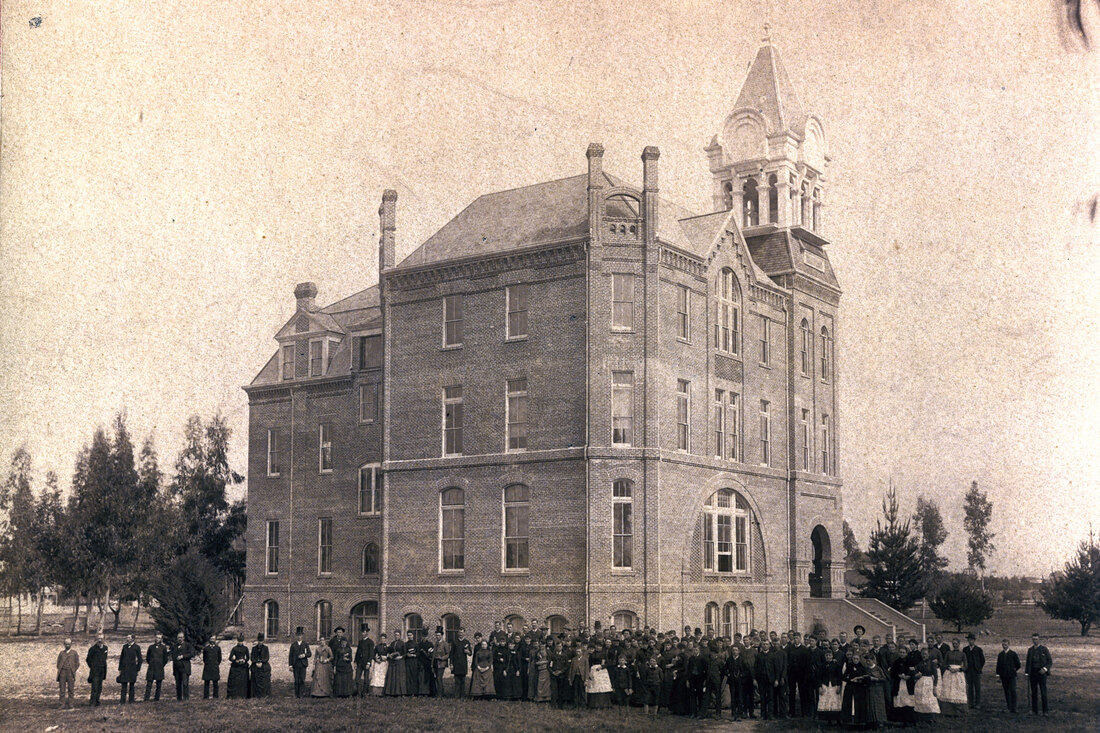Monday Quickie – When to Let Go of Work6/24/2019 We’ve all experienced it – too much work, not enough time or resources to complete it. Day after day passes the work doesn’t slow down but your time frames become shorter and shorter furthering the stress of the looming workload. Knowing when to let go and ask for help is a supremely important skill to develop. Too often we don’t ask for help, we bury our heads in the sand thinking if we put in more hours it will magically work itself out. Sound familiar? When we’ve got too much work it often shows up like this…
We can all agree we’ve seen this firsthand and very well may be living it now. The key question then becomes, “How do we address the ‘too much work, not enough [blank]’ commonality we all share?” as mentioned above. First, we need to assess the work in question and whether or not it is mandatory to keep close to the chest. Meaning, are we the only ones who can do the work? If your answer is: NO – “the work can be done by someone else”; we should begin looking for alternative means for getting the work done via our supply base, strategic partners or find a lacky within the company to dump it on. Don’t pretend like you haven’t done this or at least thought about it. First, review your existing base of suppliers and their capabilities to see where work can be sent out. Second, identify consulting firms which provide outsource services. Many times the word ‘outsourcing’ is used as an all encompassing description for service providers that offer project or work package support, often which can be done onsite with the client just as easily as offsite – which would be the traditional method of outsourcing. YES – “the work can only be done by me”. I’ll caution you here. Often times our egos tell us that we’re the only ones who can do it. We’re the only ones who can rise to the occasion. We’ve got the legacy information therefore we need to do the work. This often times is not the case, we just haven’t spent enough time or effort understanding what our options are. That and perhaps we’re a little stubborn. If you’ve done some discovery and still came up empty handed believing you’re the only person to do the job(s) then it becomes a process of prioritization. If you have a lot of work you’ll likely not be able to hit all your deliverables and or deadlines so it’s important to prioritize based on stake holder expectations, company critical milestones and your own sanity. If you don’t have any looming deadlines I like to pick off an easy project first to feel good about my ability to finish a task then switch it up and go after a tougher one. This keeps me motivated to do the work even though I know the pile of work in front of me is a tad insurmountable. A couple months back I was called by a client who had a similar ‘too much work, not enough time’ problem. As I listened to their situation I could literally feel their pain coming through the phone. They were on red alert. Their engineering teams had been working at max capacity for months and only made a small dent in the projects they were working on. As more time passed someone was able to get through to management having a ‘come to Jesus’ conversation. As a result, the company final acquiesced to the fact that their teams couldn’t handle the work and they weren’t going to hit their deadlines. This is precisely why I got phoned. The call was nothing short of “bail us out, we’re drowning in our own sorrows” type of call. Okay, perhaps my account of the situation is a bit hyperbolic, yet it’s not so far off the reservation. Fact is they had too much work and not enough time OR resources to deal with it and since my company is already an approved supplier it made it easy for their engineering manager to pick up the phone, make one call, and get the help they needed. They were finally at a point where they could let go. Our team over a two week period worked through 200+ component drawings helping our customer meet their deadline while keeping their team operating at a realistic pace. When the project was over I asked the customer why they waited so long to ask for help [regardless of the fact they came to us for that help]. Their response was simple and certainly not surprising. “We thought we could handle it but by the time we realized we weren’t going to hit our deadline we were already too deep into the project to turn back. My team was burnt out from the overtime and we just couldn’t ask more from them.” It was a valuable reminder to say the least. If at all possible, identify sources for support BEFORE you need them. While our client in this particular situation got lucky and was able to depend on a trusted supplier to help them out, often times the outcome of similar situations doesn’t produce the same results. Next time you’re in over your head will you remember to let go and ask for help? Key Take Away: Sometimes the best business decision we can make is deciding what work we want to do [internally] to increase our capacity and efficiencies while outsourcing work to suppliers. In turn, this means we can focus on the mission critical work, that we enjoy and are great at doing, while giving someone else the work and or projects we can’t handle or don’t want to deal with. The key piece is to be able to identify when you need to step aside and ask for help before it’s too late. Action Item: Challenge yourself to really look at your work and performance. How does it add up? Are you or your team working effectively? Do you need to pause and consider whether or not it’s time to ask for help? Jot down a list of activities or projects you’re working with and or will be taking on in the near term. Identify which of those projects are mission critical and which are important but able to be done at a later time or by someone else. Establish a support system of suppliers, other departments within the company or external consultants you can call on at a moments notice to help you out of a jam. Get these relationships fully vetted proactively so when you need the help your support system is ready to go. Now – breathe easier and send the Square-1 a thank you note for the advice. Life is better when we’re prepared.
0 Comments
Monday Quickie - Get Out of Your Own Way6/17/2019 Marshall Goldsmith, celebrated author and leadership coach, is famously quoted as saying, “What got you here won’t get you there”. Over the course of my career I’ve been amazed how many times this quote has shown up in my career or the people around me, ringing all too true.
What go you here won’t get you there. It means the work, style, approach and effort you did to get you to a certain point won’t allow you to continue succeeding and hitting the next level, promotion or milestone. I see this happen often in two areas of business: promotions and entrepreneurs. When we’re striving for a promotion the effort it takes to prepare oneself to get promoted often means we’re upgrading ourselves, our output, overall performance, professionalism, etc. We’re bringing more to the table in order to achieve something – a promotion. We do the job to get the job. However once the promotion occurs, it’s uncanny how often times the approach and effort we used to get the promotion isn’t what is needed to be successful in the new role. Take for example getting promoted from an individual contributor role into your first management role. You’re a staff level (individual contributor) engineer who excels in product development and as a result you start getting noticed by upper management. You’re consistently hitting your deadlines, solutions oriented, taking on additional initiatives, finding work proactively, helping your peers, etc. These are some of the characteristics of a high performing staff level engineers. These very characteristics are what get people noticed for management consideration. Fast forward, the stars have aligned, and you’ve accepted the promotion. You’re in management now for the first time in your career. You’re a bit nervous because you’ve never been in management before but you’re confident you’ll succeed in this role just like you did in the last role. You’ll do the same thing as before, working hard, and everything will work out. Sound familiar? This is the genesis of the statement by Goldsmith “What got you here won’t get you there”. Now that you’re in management you’ll need to deploy a new set of skills in order to be successful. Some of these skills you already possess like the ability to hard work, focus on being the best you can be, attention to deadlines, leading by example, etc. However, now you also need to employ a new set of skills to make this new role work. Skills like listening, influencing, strategizing resources, planning, holding people accountable, communicating above and beyond to ensure your message and intent is understood by your team. The key difference is the skills necessary to be successful in management are different and require more than what was necessary in the individual contributor role. You’re now responsible for people and the product, not just the product itself. If you were to use the same approach and tactics you did to get promoted into management now that you’re in management you run the risk of struggling. Struggle leads to frustration and for some of us discontent. The snowball effect inevitably for some leads to daydreaming being back in an individual contributor role and out of management. The same can be said for entrepreneurs. The second area I see this happen is when entrepreneurs get in their own way of being successful. A talented person filled with passion, enthusiasm and spirit to do something different comes up with an idea and begins to put it into action. Our entrepreneur, largely due to their work ethic and unyielding mindset to succeed can find themselves in situations where their idea, product and or company suddenly beings to grow. At times, grow rapidly. They’ve done an amazing job taking an idea and turning into a viable reality. Outsiders begin to see the hard work and effort of this entrepreneur and want to join the party. A team is formed. Just like that, POOF, a company is born. In the world of medical devices this plays out as someone having a great idea to improve a patient experience or technology. They build their idea into a tangle product, secure funding and start growing the company around it. It’s a thrilling time for the entrepreneur(s) as their dreams begin to become reality. Up to this point much of the success of the product and new company can be attributed to the founding entrepreneur(s) and their early teams. Once again, we find ourselves at a crossroads where Goldsmith’s statement ‘What got you here won’t get you there’ comes into play. As the company grows so do the expectations and requirements to hit each successive milestone. Products need to be rigorously vetted, tested and refined to meet each new milestone. External forces, like the FDA or investors eventually get involved, adding further angst and expectation to the company and the product development process. Many entrepreneurs find the process up to this point rewarding and exciting, yet the most challenging parts lie ahead. The two most common goals for an entrepreneur and their start-up company in the medical device space is to either position their company for acquisition by a larger suiter, or build it up as a stand alone organization, commercializing the product for sale. Both of these outcomes require a similar thing to happen – the company must shift and meet new expectations, new milestones and operate as a sophisticated organization. It’s no longer the wild west free flowing organization it once was at the beginning. Rules are in place, processes, procedures and increasing expectations. Our entrepreneur, who can be credited with the early successes of the company, now needs to make a decision. Does s/he continue to lead the charge or bring in another person who is more experienced in leading companies to the next stage of life. This is an incredibly tough decision, one many entrepreneurs struggle with. Why? Two reasons: ego and the passion they had which got them here in the first place. It’s incredibly tough to step aside from your baby (the company the entrepreneur founded) to hand off the reigns to someone else. Most people can’t do it and so they continue to lead the organization thinking they can get it to the next level. In fact, some people can indeed do this, however many struggle unnecessarily. Staying at the helm leading the company for many entrepreneurs is a catastrophic decision. Many entrepreneurs by their nature can be classified as A-types, controlling, visionaries, big picture thinkers, passionate types. While these are great characteristics to have, they don’t always make for the right recipe to take an organization to the next stage – mature growth. As such, the entrepreneur chooses to stay in the driver seat continuing to lead the company with varying degrees of success. Inevitably problems start arising within the company. The key indicator our original founder/ entrepreneur is having a hard time in the leadership ranks is their organization is flush with people problems. Attrition is high, employees are discouraged, little effort is put into going above and beyond, leaderships approach is more dictating rather than encouraging and influencing. As a result of these challenges problems start arising with the product. Issues plague the organization from all angles. Many of us are better off being the founder, the visionary, not the CEO or chief leader growing a company through maturity. How do we overcome Marshall Goldsmith’s statement “What got you here won’t get you there”? We invest early in ourselves by getting a mentor! Mentors do many things but above all they provide perspective. Mentors see the writing on the wall long before we do. Since they aren’t in the weeds and often times have an external perspective it allows them room to see all the angles. Having a good mentor in place in crucial to anyone, regardless of their professional, but especially important for someone seeking a promotion or operating as an entrepreneur. How do we deal with Goldsmith’s statement – we change or we get out of the way. Mentors can help you change, help you elevate yourself, help you grow and flourish. The trick is you have to be open to the feedback. Open to change, bringing along a growth mindset. People who operate in this capacity, open to feedback with a growth mindset, stand a much better chance making the right decisions in these key moment (promotions, entrepreneurship) rather than allowing their ego’s to write checks their bodies can’t cash. Are you living Goldsmith’s statement today, “What got you here won’t get you there”? If so, get yourself a mentor and be prepared to face your reality. You’ll either need to adjust accordingly or get out of the way. Key Take-Away: The effort and approach you used to get to one milestone inevitably won’t be what’s needed to help you get to the next milestone. Are you an entrepreneur? If so, get a mentor and begin building your growth mindset so you can be prepared to appropriately grow your baby (your company). Action Item: Get a mentor. It doesn’t matter what level of your career you’re at or what your role is. Spend the time now to invest in yourself for the future, even if your working future is only a couple years away from retirement. Invest now to be a better person tomorrow. Check out www.micromentor.org, it’s a free service put on by a nonprofit organization which matches people with mentors. When talking with a customer about their project support needs, do you use a formalized approach or do you just wing it?
Interestingly enough, I was amazed to learn recently that the vast majority of consultants (including solopreneurs) don’t utilize a formal process for collecting information when talking with a customer about a project. As I began asking more questions I learned that this was a habit across the board, regardless of the amount of years of experience the consultant has in business and or their consulting practice. The conservative side of me wanted to run for the hills hearing this. Working as a consultant offers a lot of flexibility, however within this flexibility comes lots of room for alternative view points, ambiguity and of course misinterpretation. When things are loosey goosey we open ourselves up for further opportunity for projects to fail, missing the mark or leaving one or both parties with a sour taste in their mouths at the end of the project. One of the best things I learned early in my career from a more experienced person I worked with was the importance of being disciplined in using a standardized system of help in the information gathering discussions when talking with clients. Why? Because if you don’t it’s amazing how quickly people can interpret things differently than what we had assessed, thought or even heard. What’s worse, is a simple misunderstanding up front at the beginning of a project or relationship can boil up to big issues down the road, including legal actions. For these reasons I use, and always suggest consultants use, a formal process for evaluating, qualifying or assessing project opportunities with customers. This meeting or discussion between supplier (consultant) and customer can be referred to as an ‘intake meeting’, ‘scoping a project’, ‘project qualification’ or ‘project discovery’. They’re all designed to do the same thing – ask questions to obtain information. When you’re in a discussion with a customer about their project needs you’re really trying to figure out one thing – is this the right project/ business opportunity for me to take on? The answer to that question is buried in a flurry of Q&A, best served up using a formal approach where we learn about our customers’ needs, thoughts, feelings and desires for the project and work ahead. Creating a project qualification process document (SOP) before you begin discussing projects with customers ensures you will gather all the information upfront in a consistent manner. This will also lessen the likelihood of you having to go back to ask the customer for foundational questions to better understand the project. Here’s some good questions you could use in your project qualification discussions to determine if this is the right work to take on and customer to work with:
Keep qualification discussions to no more than 30 minutes if possible. As a consultant your most precious asset is your time. All to often customers will spend time talking about things that have nothing to do with the project and or work they’re requesting your help with. Set the tone at the beginning of the discussion indicating you have 30 minutes to talk through their project needs, then moderate the discussion from there on out. Think like a consultant – not an employee. Employees have to do the work their employer asks of them, this is not true as a consultant. Your job is to listen and provide feedback. If what the customer is asking for doesn’t add up or isn’t feasible it’s your job to guide them to an alternative solution and or walk away from the opportunity. Consultants advise and perform the work as an SME. Be wary of situations where customers are asking you to perform a miracle. Projects must be grounded in reality, otherwise you may end up as the one to blame. As you wade through the project qualification discussion with your customer it’s advisable to be on the look out for the following challenges:
As you begin to formulate your approach to these discussions and questions it’s highly advisable to jot it down on paper, creating a template or checklist you can use each and every time. Should you get through the project qualification stage and both you and customer are interested in moving forward to the next stage make sure you put everything in writing that was covered during the qualification discussion. Be specific and direct. Your Statement of Work (SOW) is the backbone of your project and incredibly important in outlining expectations, performance and what happens if changes need to take place during the project. Key Take Away: As a consultant your most precious asset is your time. Use a formal and formatted approach to your project qualification discussions with your customers to ensure you collect the right information up front to better determine if the project in question is the right opportunity for you. Can you deliver the goods inline with the customers expectations? Action Item: Create a project qualification template or scoring matrix to use in your customer discussions to obtain all the information needed up front for the project. This removes all the guess work. Your template should include both exploratory questions to get your customer talking and sharing with you the in’s and out’s of the situation while also simple ‘yes’ and ‘no’ questions like “is this project approved?. Once you’ve completed the discussion with your client tell them you will get back to them after you’ve had an opportunity to digest the information you gathered. This will give you time to allow the information to sink in, time provides perspective. Sometimes a scoring matrix can be really beneficial in this situations especially if you have multiple project opportunities with multiple customers because it allows you to objectively rank each project opportunity against one another. Pick the best or most lucrative projects and say adios to the others. I just got done reading ‘Elegant Warrior’ by Heather Hansen – finished it in an afternoon. I’m a slow reader, and one who gets distracted easily, for me to finish a book of any size in one afternoon is quite a feat. Once I got into Hansen’s stories from the courtroom and how they apply to real life I was amazed at how many of them I had experienced both in my professional and personal life. I couldn’t put the book down. As I read on I learned that I made a lot of the same mistakes Hansen has made in her own career, interestingly enough my learning lessons were very similar, just not in a courtroom thankfully. Doing the right thing at the right time while keeping your class, elegance and respect isn’t easy. Especially when you’re in a leadership role and everyone’s watching your every move. “Leadership is easy!” said no one ever. Why is it that leadership is so difficult and hard to master? Well, for starters it’s a role that is largely trial and error, skill learning in the moment on the job. That means a lot of what we know and learn over time about being a leader comes from mistakes and blunders people have made before us. We learn from watching others, Hansen’s ‘Elegant Warrior’ talks about this as well. My career with leadership was no different. At the age of 23 I found myself in my first ‘management’ role and was scared out of my mind. Notice I used the word ‘management’, not leadership. There’s a big difference in the two. The spark of a great leader is someone who acknowledges and accepts they don’t know it all and asks for help. Simple, yet incredibly difficult to put into practice. As the years went by and my leadership prowess developed, I began to grow more and more confidence in my ability to lead others, influence and develop those around me. Though my confidence grew, I found as time went on the challenges I was faced with grew in size and significance. Confidence, or an inflated level of confidence, can be a big black eye for managers as it can cause people to overlook basic ways of leading that should never go unattended. My father has always told me, “You come from the school of hard knocks, it’s in our family, so don’t fight it, just learn from it.” And learn I did… Looking back on my earlier years in leadership there were three incidences I encountered that go down as the biggest mistakes of my career. While they were indeed mistakes on my part, the learning lessons that came of these situations were priceless to my overall learning and education in the art of leadership. Mistake #1 - Hiring the Wrong People I was a couple years into my leadership role overseeing a technical division. We were growing and seeing some good success and needed to hire people to keep the growth curve climbing north. After interviewing a variety of candidates I became inpatient (a lifelong battle of mine) in that I had not found the ideal person to join our mob squad of high performers. Throughout the interview process there was one person, we’ll call him Negative Norm, who had most of the characteristics I was looking for however it was plain as day to see that he had a hug ego and it was all about what Negative Norm was going to get from us, not what he was going to bring to the team. With my lack of leadership experience leading my decision making I hired Negative Norm and did the ole ‘cross your fingers and hope for the best’ routine. Dang it! What a dumb mistake that was. I still cringe about that experience today even though it’s been years since it happened. Not only did Negative Norm come in and create all sorts of disruption to the great culture we had worked so hard to develop on the team over the years but he also soured one of my best employees. We end up firing Negative Norm six months into him joining our team, which probably cost our company a boat load of money in tangible and intangible costs, as well as gave me a disenfranchised team and culture. I then had to deal with a declining all-star on our team who had become transfixed with the notion, thanks to Negative Norm, that he was working too hard and didn’t feel like this was the right place for him. Prior to disruptive Negative Norm entering our team this all-star employee was the quintessential idea of what a great employee should be. Lesson #1 as a Result of Mistake #1 – if you can’t find the RIGHT person, don’t make a hiring decision at all. You’re better off waiting and being patient to find the right person rather than settle for someone who could really make a mess of what you’ve worked so hard to build. Mistake #2 – Not Dealing with Conflict Head-On Have you ever had two employees get into a WWF battle royale at your office? If you haven’t, pray you never have to deal with that because what I witnessed was a linguistics slug fest that would make even the strongest people shiver, or send HR running for the hills. Two employees, we’ll call them Jack and Mort, worked together constantly. Both were high performers with a lot of potential and equally disciplined when it came to their work ethic. Mort had an affinity for talking down to people and really making those around him feel awful at times. Sometimes it was intentional, other times it was a complete lack of awareness on how he was coming across to others. Point being, he had a nasty proclivity for making others feel bad which lead to all sorts of not so delightful challenges on the team. I was doing my best to deal with it and had thought we were making progress. One day Jack finally decided he had enough of Mort’s verbal shenanigans and after bantering back and forth unleashed a verbal assault, letting Mort have it. The may lay interrupted the entire office causing employees who were uninvolved to scuttle into corners near the water coolers to talk about the events. It was a rather big distraction if you catch what I’m throwing down here. What did I do? I took action immediately and called each employee into my office, one at a time, to get their side of the story so I could then come up with a solution to the issue. What do you know, their stories were completely different from one another. Shocking. After talking with a variety of people who were ‘expert witnesses’ and my two lovely employees, I finally deliberated on our course of action to move forward with and presented it Mort and Jack individually. Big mistake that was! While I still stand behind my course of action decision, even today, it wasn’t the decision that got me into hot water. It was the fact that I never brought BOTH Jack and Mort into a closed door office to hash out what had happened. Lesson #2 as a Result of Mistake #2 – If you are in the middle of a conflict resolution issue between two employees and their stories don’t add up the best thing to do is bring both of them into a closed door office and get to the bottom of it. When people are in front of the other person the issue exists between you’ll find that their recollection of what happened changes as they can’t embellish, finagle or distort the truth. You also then have a better opportunity, in this case Jack and Mort, of talking things through, with you the leader as the mediator guiding the conversion to a safe landing. Mistake #3 – Allowing Mediocrity Similar to mistake #1 however this one had a far bigger impact than what I expected. I had previously written about this particular mistake along with steps on how to deal with conflict resolution which can be accessed by clicking here. I had an employee, we’ll call him Dr. Evil, who loved to say all the right things yet his actions never amounted to his words. Dr. Evil would show up consistently late most mornings, would be up from his desk socializing often during the day and enjoyed a consistent ‘sick day’ every other week, typically on Mondays. Dr. Evil was a smart cookie. He knew how to play the game well enough to where he wasn’t on the firing guillotine but also wasn’t on the winners’ podium as a result of his work. Dr. Evil was mediocre. His work ethic was lack luster, his results were average at best and his participation on the team was, like old worn in wallpaper, almost unnoticeable. After finally building up the courage to put Dr. Evil on a performance plan, which ultimately led to his demise, I felt good about my ability to deal with him and ultimately get him off the team. Until an employee said this to me… “Wow, I’m shocked we fired Dr. Evil, that was long overdue. I was beginning to think he would be with us forever and I’d have to pick up the slack.” Ouch. That hurt. What hurt even worse was the employee that said this to me was my top performer! Lesson #3 as a Result of Mistake #3 – allowing mediocrity on any team is a killer in more ways than one. Not only does it broadcast that you as a leader aren’t willing to deal with underperformers, it also signals that your expectation for the team and culture of your company/ department, etc. are that of averages. Nothing special. No pixy dust. No special sauce. What’s worse is that the people who are routinely most impacted negatively by leaderships inability to deal with mediocrity are your top performers. When in doubt – move them out. Jim Collins, author of the book ‘From Good to Great’ says, “Get the right people on the bus and the wrong ones off otherwise it will begin to negatively impact the right ones.” Leadership is synonymous with making mistakes. It’s okay to make mistakes, people don’t expect leaders to be perfect, so long as the leader doesn’t try to act perfect. Owning ones mistake is a powerful move as it shows you are humble, honest and live realistically. What isn’t okay is to keep making the same mistake, not learning from them the first time around. Key Take Away: You’ll never be an expert at leading, it’s an evolving art form that takes practice, tons of patience and a willingness to listen. Learn from your mistakes and learn quickly. When in doubt, don’t make a hiring decision. You’re better off continuing the search for the right person rather than settling and doing the old ‘fingers crossed, let’s hope this works’ routine. Action Item: When dealing with conflict in the workplace it’s best if you’ve had experience with tough situations before they occur. Lot’s of time the result of a conflict at the office has a lot to do with how management handles it. If you’re cool, calm and collected you’ll stand a better chance of navigating through the conflict and coming out the other side feeling good about the situation and your involvement. Practice ahead of time! Get a buddy or a colleague and role play difference conflict resolution scenarios. Try being both he employer and the person in leadership. Mix up the scenarios and really test your ability to be patient, ask great questions and most of all LISTEN. Practice will help immensely with how you deal with future situations. About the AuthorTravis Smith is the founder and managing director of Square-1 Engineering, a medical device consulting firm, providing end to end engineering and compliance services. He successfully served the life sciences marketplace in SoCal for over 15 years and has been recognized as a ‘40 Under 40’ honoree by the Greater Irvine Chamber of Commerce as a top leader in Orange County, CA. Categories
All
Archives
July 2024
|
Visit Square-1's
|
|







 RSS Feed
RSS Feed


